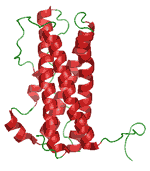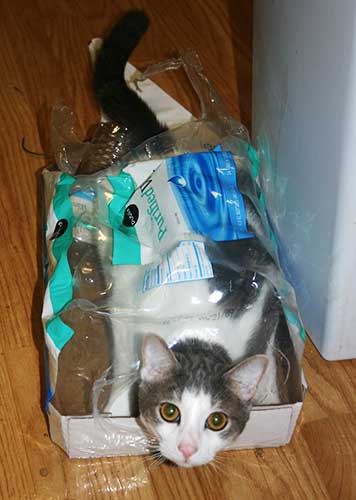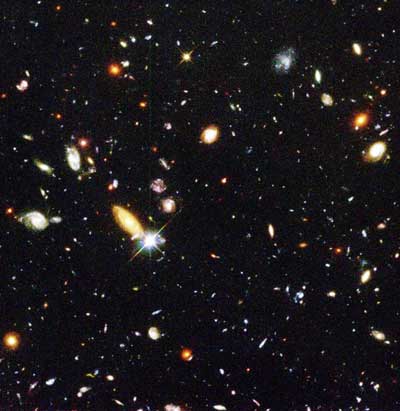A few days ago, someone on my flist posted something that had a casual mention of a drug that is used to cause lactation. I don’t remember who it was, or what the post was actually about, see, but I ended up getting sucked down the Intertubes for hours because if ot, and it was some hours before I re-surfaced in the middle of a lake many miles away.
Lactation in human beings is largely mediated by a hormone called, naturally enough, “prolactin.” But that’s not the interesting bit. The interesting bit is about sex.
 This is prolactin. It’s a hormone produced by human beings in the breast during breast feeding (it causes the production of milk) and in the brain during orgasm. As is typical with many hormones, it serves double duty and has a number of different roles; evolutionary biology never starts with a clean slate, so we get hormones in one part of the body repurposed to do something completely different in another part of the body (and we also get fucked-up design night mares like the knee…but I digress).
This is prolactin. It’s a hormone produced by human beings in the breast during breast feeding (it causes the production of milk) and in the brain during orgasm. As is typical with many hormones, it serves double duty and has a number of different roles; evolutionary biology never starts with a clean slate, so we get hormones in one part of the body repurposed to do something completely different in another part of the body (and we also get fucked-up design night mares like the knee…but I digress).
Its role in the brain is interesting. it’s what keeps you from wanting to fuck all the time.
When (most) people have an orgasm, there’s a drop in sexual arousal immediately afterward. There’s usually a refractory period, during which you can’t get off again, and there’s a generalized, overall decrease in libido. The length of time it lasts varies all over the map; for some folks it’s a few minutes, for other folks it’s the rest of the day, or at least until the rerun of “Buffy the Vampire Slayer” is over. Prolactin is the cause.
When it’s released in the brain during and after orgasm, the role of prolactin is to stomp all over your arousal like it was a narc at a biker rally. A while ago, a bunch of scientists far better at getting funded than I am worked out a way to get paid for watching people masturbate; they found some heroic volunters, hooked them up to blood sampling equipment, then monitored the levels of various hormones in their blood while the volunteers masturbated to orgasm. The experiment was repeated with volunteers who could experience multiple orgasms.
What they found, aside from the fact that getting paid to watch women masturbate is really hot, is that the production of prolactin is directly correlated to the post-orgasmic crash; the prolactin remains in the body for hours (or longer); while the level of prolactin is high, arousal is difficult or impossible; and people who have multiple orgasms don’t have this spike in prolactin in their blood after they get off.
All this, I already knew.
 Being the transhumanist that I am, which is often just a way of saying being the pragmatist that I am, I’ve long thought that the easiest path to becoming multiply orgasmic would probably be to develop a drug that blocks the action of prolactin. Snap, job done. Take a pill, get off again and again and again and again. And then some more after that.
Being the transhumanist that I am, which is often just a way of saying being the pragmatist that I am, I’ve long thought that the easiest path to becoming multiply orgasmic would probably be to develop a drug that blocks the action of prolactin. Snap, job done. Take a pill, get off again and again and again and again. And then some more after that.
What I didn’t realize was that such drugs already exist.
So here I am, reading LJ, and I find a passing reference to a drug that induces lactation. Since I hadn’t heard of it before, I do what I always do with novel words or ideas–I consulted the Oracle at Google.
The Oracle at Google is wise and all-knowing, but she can also be a temperamental and difficult oracle, for she often sows her information with the seeds of more things you didn’t know, which in turn lead to more things you didnt know, and still more things you didn’t know, inducing you to submerge yourself in the waters of human knowledge and not come up for air until you’re reading about the history of Hadrian’s Wall when all you’d asked for was perhaps the best ways to trim a cat’s claws.
Anyway, lactation can be induced in women by means of drugs that enhance the action of prolactin, or that stimulate prolactin production. Lactation can also be prevented, naturally enough, by drugs which block the effects of prolactin, of which there are two, cabergoline and bromocriptine.
Now, there are a lot of other reasons why you might want to block prolactin, which have nothing to do with lactation. Excess prolactin is responsible for a number of other conditions; certain forms of pituitary disease cause excess levels of prolactin, which can lead to cancers, arthritis and other autoimmune diseases, and a whole host of other stuff you don’t want. So there’s a medical need for drugs that block prolactin.
As it turns out, there’s a relationship between prolactin and a completely different compound, the neurotransmitter dopamine. Dopamine also serves multiple functions. It’s the neurotransmitter that signals nerves in your voluntary motor centers of your brain; when you think about moving your arm, your motor centers produce dopamine, which turns into the nerve impulses that make your arm actually move.
It’s also a key component of the so-called “reward center” of the brain that mediates feelings of pleasure; when you delight in anything from a beautiful painting to the knowledge that you’re getting paid to watch people masturbate, dopamine is the reason. And dopamine mediates much of the sexual system of the brain, including the functions that cause physical arousal.
Dopamine and prolactin are mutually antagonistic. Dopamine tends to inhibit the function and production of prolactin, and excess prolactin tends to inhibit the function of dopamine. For that reasons, things that are antagonistic to prolactin tend to enhance the function or quantity of dopamine in the brain, and vice-versa.
Okay, so here’s where things get really cool.
There is a devastating disease called Parkinson’s disease which results in gradual, irreversible destruction of the dopamine-producing cells in the motor area of the brain, which leads to gradual, creeping paralysis. Because it’s caused by the loss of dopamine-producing cells, anything which acts to stimulate the production of dopamine in the brain will tend to reverse the paralysis, so dopamine-enhancing drugs are often used to treat Parkinson’s.
Now, as I’ve already mentioned, drugs that block prolactin tend to enhance dopamine, and vice versa. The drug bromocriptine is a prolactin antagonist and a dopamine agonist; for that reason, it’s often used to treat both Parkinson’s disease and certain pituitary disorders that cause excess prolactin production. The down side is that it has a number of fairly nasty side effects in some people, including such unpleasantness as psychosis.
Cabergoline is another drug that works the same way as bromocriptine; like bromocriptine, cabergoline is used to treat Parkinson’s disease and pituitary disease. It, too, blocks prolactin and enhances dopamine, and it has fewer nasty side effects.
One interesting side effect reported in both men and women being treated for things like Parkinson’s is multiple orgasms.
Which is a hell of a side effect, if you ask me.
In fact, cabergoline (and, to a lesser extent, bromocriptine) are sometimes prescribed off-label to counteract the sexual side effects of antidepressants (which modify the action of dopamine), and as treatments for sexual dysfunction.
So it turns out, as is often the case, that not only was I right in thinking that a prolactin-blocking drug might allow folks to have multiple orgasms, but that, as usual, other folks had already beaten me to the punch.
The moral lesson here is to be careful what you write about in your LiveJournal. The simple mention of an unfamiliar word can suck someone down into the bowels of the Internet for hours on end, and not only that, can spread viral-like through LiveJournal psts to other folks, who may get sucked down for hours on end plumbing the depths of biochemistry or stellar nucleosynthesis, as this post in shiva-kun‘s journal so aptly shows. In the interests of getting things done in the office, I hereby ask that all the folks on my friends list refrain from posting anything interesting, and instead confine themselves to discussions of reruns of “Friends” for the next three days, kay?



 And that aint nothin’. Technology today, as interesting as it is, isn’t qualitatively different from the technology of the Victorians. We still make stuff by starting with a bloody great lump of stuff and whacking bits off, pounding, molding, stamping, cutting, and otherwise hacking away at the stuff until all that’s left is the bits we want.
And that aint nothin’. Technology today, as interesting as it is, isn’t qualitatively different from the technology of the Victorians. We still make stuff by starting with a bloody great lump of stuff and whacking bits off, pounding, molding, stamping, cutting, and otherwise hacking away at the stuff until all that’s left is the bits we want.



